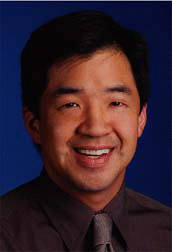Contact the Editor ENToday welcomes your feedback about our publication! Contact us using the information below: ENToday@lwwny.com
Explore This Issue
November 2006TORONTO-Despite the evolution of endoscopic sinus surgery and a growing understanding of the pathophysiologic mechanisms of chronic rhinosinusitis (CRS), it remains a prevalent health care problem, afflicting approximately 30 million Americans.
To discuss some of the most recent advances and information in the evaluation and treatment of CRS, several noted experts in the field gathered to share their expertise and compare notes at the American Academy of Otolaryngology-Head and Neck Surgery (AAO-HNS) annual meeting.
Evaluating the Patient
When we look at patients with chronic rhinosinusitis, we really need to understand that the etiology may be multifactorial, said Pete S. Batra, MD, of the Cleveland Clinic. Certainly, surgery may play a role, but there are many other potential causative factors that we need to think about-immunodeficiency, for example.
Dr. Batra cited a study from the University of Iowa, in which researchers looked at their hard core population-patients who had undergone at least three previous surgeries. They found that 40% of those patients were anergic to delayed hypersensitivity tests, with 18% having low IgG levels and 16.7 % having low IgA levels.
Most interesting in that study is that almost 10 percent of them were diagnosed with common variable immunodeficiency and 6.2 percent had selective IgA deficiency-an incidence much higher than would be expected in the general population.
So if you’re going to work this up, you should think about getting quantitative immunoglobulins and also IgG subclasses, Dr. Batra said. You need vaccination and antibody responses to protein and polysaccharide antigens, and HIV if clinically indicated. If this is a workup you don’t feel comfortable performing yourself, it’s perfectly appropriate to recruit an immunologist. And that’s going to be especially critical if you’re going to consider any kind of immunoglobulin infusions.
Then there’s primary ciliary dyskinesia (PCD) to think about, Dr. Batra continued. These patients will universally have sinusitis and most of them will have recurrent otitis as well, he said. You’ll see bronchiectasis in about 83 percent and half of them will have the classic finding of situs inversus.
However, if you’re going to think about PCD, he advised, you have to recruit a pathologist with some interest and some experience in this who can work it up for you.
What I do is have them come to the clinic and do the brushing with a bronchoscopy brush, Dr. Batra said. We’ll brush the middle turbinate and then give them the specimen, which they’ll take directly to the lab where they can do dynamic studies.

Leave a Reply